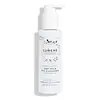What's inside
What's inside
 Key Ingredients
Key Ingredients

No key ingredients
 Benefits
Benefits

 Concerns
Concerns

 Ingredients Side-by-side
Ingredients Side-by-side

Water
Skin ConditioningC15-19 Alkane
SolventOleyl Erucate
EmollientPropanediol
SolventGlycerin
HumectantCaprylic/Capric Glycerides
EmollientBetula Alba Juice
AstringentCetyl Palmitate
EmollientPrunus Amygdalus Dulcis Oil
Skin ConditioningVaccinium Myrtillus Fruit Juice
Skin ConditioningSodium Stearoyl Glutamate
CleansingCaprylyl/Capryl Glucoside
CleansingAvena Sativa Kernel Oil
Skin ConditioningAvena Sativa Kernel Flour
AbrasiveCanola Oil
EmollientSaccharide Isomerate
HumectantSclerotium Gum
Emulsion StabilisingPhenoxyethanol
PreservativeMicrocrystalline Cellulose
AbsorbentCitric Acid
BufferingSodium Gluconate
Skin ConditioningXylitol
HumectantCellulose Gum
Emulsion StabilisingTocopherol
AntioxidantHelianthus Annuus Seed Oil
EmollientXanthan Gum
EmulsifyingEthylhexylglycerin
Skin ConditioningSodium Citrate
BufferingDecyl Alcohol
EmollientRosmarinus Officinalis Leaf Extract
AntimicrobialSodium Chloride
MaskingWater, C15-19 Alkane, Oleyl Erucate, Propanediol, Glycerin, Caprylic/Capric Glycerides, Betula Alba Juice, Cetyl Palmitate, Prunus Amygdalus Dulcis Oil, Vaccinium Myrtillus Fruit Juice, Sodium Stearoyl Glutamate, Caprylyl/Capryl Glucoside, Avena Sativa Kernel Oil, Avena Sativa Kernel Flour, Canola Oil, Saccharide Isomerate, Sclerotium Gum, Phenoxyethanol, Microcrystalline Cellulose, Citric Acid, Sodium Gluconate, Xylitol, Cellulose Gum, Tocopherol, Helianthus Annuus Seed Oil, Xanthan Gum, Ethylhexylglycerin, Sodium Citrate, Decyl Alcohol, Rosmarinus Officinalis Leaf Extract, Sodium Chloride
Water
Skin ConditioningCanola Oil
EmollientPolyglyceryl-3 Methylglucose Distearate
EmulsifyingIsopropyl Isostearate
EmollientCetearyl Alcohol
EmollientGlyceryl Stearate
EmollientCaprylic/Capric Triglyceride
MaskingCetyl Stearate
EmollientAllantoin
Skin ConditioningPanthenol
Skin ConditioningInulin
Skin ConditioningLactic Acid
BufferingAlpha-Glucan Oligosaccharide
CleansingXanthan Gum
EmulsifyingCetyl Alcohol
EmollientPotassium Cetyl Phosphate
EmulsifyingStearic Acid
CleansingCitric Acid
BufferingPhenoxyethanol
PreservativeSodium Benzoate
MaskingPotassium Sorbate
PreservativeWater, Canola Oil, Polyglyceryl-3 Methylglucose Distearate, Isopropyl Isostearate, Cetearyl Alcohol, Glyceryl Stearate, Caprylic/Capric Triglyceride, Cetyl Stearate, Allantoin, Panthenol, Inulin, Lactic Acid, Alpha-Glucan Oligosaccharide, Xanthan Gum, Cetyl Alcohol, Potassium Cetyl Phosphate, Stearic Acid, Citric Acid, Phenoxyethanol, Sodium Benzoate, Potassium Sorbate
 Reviews
Reviews

Ingredients Explained
These ingredients are found in both products.
Ingredients higher up in an ingredient list are typically present in a larger amount.
Canola Oil is Rapeseed oil with low amounts of erucic acid. It is an emollient and helps hydrate the skin. Emollients help hydrate and soften your skin by trapping moisture.
The comedogenic rating of canola oil is 4.
Canola oil contains Vitamin E, Vitamin K, and fatty acids such as linoleic acid.
Learn more about Canola OilCitric Acid is an alpha hydroxy acid (AHA) naturally found in citrus fruits like oranges, lemons, and limes.
Like other AHAs, citric acid can exfoliate skin by breaking down the bonds that hold dead skin cells together. This helps reveal smoother and brighter skin underneath.
However, this exfoliating effect only happens at high concentrations (20%) which can be hard to find in cosmetic products.
Due to this, citric acid is usually included in small amounts as a pH adjuster. This helps keep products slightly more acidic and compatible with skin's natural pH.
In skincare formulas, citric acid can:
While it can provide some skin benefits, research shows lactic acid and glycolic acid are generally more effective and less irritating exfoliants.
Most citric acid used in skincare today is made by fermenting sugars (usually from molasses). This synthetic version is identical to the natural citrus form but easier to stabilize and use in formulations.
Read more about some other popular AHA's here:
Learn more about Citric AcidPhenoxyethanol is a preservative that has germicide, antimicrobial, and aromatic properties. Studies show that phenoxyethanol can prevent microbial growth. By itself, it has a scent that is similar to that of a rose.
It's often used in formulations along with Caprylyl Glycol to preserve the shelf life of products.
Water. It's the most common cosmetic ingredient of all. You'll usually see it at the top of ingredient lists, meaning that it makes up the largest part of the product.
So why is it so popular? Water most often acts as a solvent - this means that it helps dissolve other ingredients into the formulation.
You'll also recognize water as that liquid we all need to stay alive. If you see this, drink a glass of water. Stay hydrated!
Learn more about WaterXanthan gum is used as a stabilizer and thickener within cosmetic products. It helps give products a sticky, thick feeling - preventing them from being too runny.
On the technical side of things, xanthan gum is a polysaccharide - a combination consisting of multiple sugar molecules bonded together.
Xanthan gum is a pretty common and great ingredient. It is a natural, non-toxic, non-irritating ingredient that is also commonly used in food products.
Learn more about Xanthan Gum